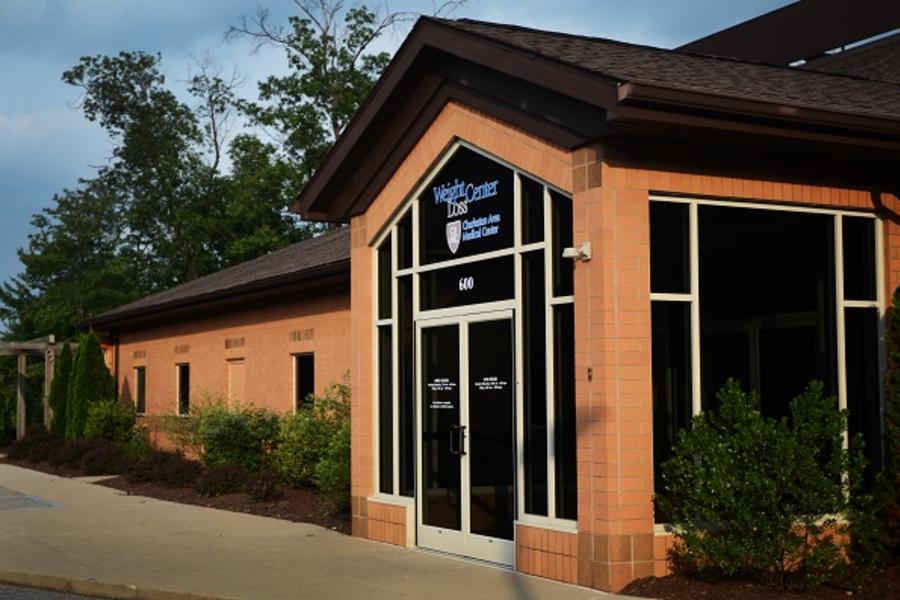Our Approach to Care
When your weight interferes with your quality of life and you’re ready to make a change, see the experts at CAMC. Our Weight Loss Center offers more than diets. We provide a comprehensive and multidisciplinary approach to help you achieve long-term weight loss and live a healthier life.
Our solutions range from early counseling to a variety of medical and surgical weight loss options, including support after you reach your goals

West Virginia’s Weight Loss Specialists
Our providers are experts in a variety of weight loss methods, medical or surgical.
What Sets Us Apart

Support for your Weight Loss Journey
Weight loss isn’t just about losing pounds and inches. It’s also about the possibility of freeing yourself from the life-threatening health risks that accompany being overweight, including diabetes, high blood pressure, joint damage, sleep apnea and depression. We’re here for you now, and as long as you need us throughout your weight loss journey.
Accreditation
The CAMC Weight Loss Center is nationally accredited for adult and adolescent bariatric surgery. Our center is the only MBSAQIP Accredited Comprehensive Center in Charleston and has been named a Blue Distinction Center+ for Bariatric Surgery designated by Highmark Blue Cross Blue Shield West Virginia.

Weight Loss Success Story - Beth
Beth Atkins, RN, had the sleeve gastrectomy surgery in 2013 and has maintained a 115 to 120 pound weight loss since.
"Growing up, I was always overweight. When I started nursing school, my weight significantly increased, which led to severe back problems. After graduating from nursing school and getting married, my weight continued to increase. After years of going to a chiropractor to get relief from my back pain, I realized that my weight was the biggest problem and it needed to be gone! I had done all of the ‘fad’ diets with some success, but I would always regain the weight…and then some. So after years of researching and contemplating weight loss surgery, I finally decided to do it. Using weight loss surgery as a tool allowed me to lose weight, helped with my back problems and do things I never thought I would do again!”
Our Recognitions

American College of Surgeons
Named an MBSAQIP Accredited Comprehensive Center by the American College of Surgeons

Highmark Blue Cross Blue Shield West Virginia
Named a Blue Distinction Center+ for Bariatric Surgery designated by Highmark Blue Cross Blue Shield West Virginia.
Frequently Asked Questions about Exercise
Exercise is an important part of weight loss, but you should check with your doctor before starting any new physical activity. Here are some frequently asked questions about exercise.
No. First check with your doctor before starting any physical activity, especially if you:
- Are over 35
- Have been inactive for a long period of time
- Have a history of smoking
- Have any past/current medical condition
- Unusual chest pain, pain in your left or mid-chest area, left neck, shoulder, or arm during or just after exercise
- Shortness of breath
- Dizziness or confusion
- Warm up
- Light stretching or mobility work
- Exercise (cardio/strength training)
- Cool down
- Light stretching or mobility work again
*Warm-up and cool down should be 5 to 10 minutes in duration to help minimize injury
According to the American College of Sports Medicine position stand, “Appropriate Intervention Strategies for Weight Loss and Prevention of Weight Regain for Adults,” a minimum amount of 2.5 hours per week of physical activity at a moderate intensity can have “significant health benefits.”
American College of Exercise Sports Medicine Exercise Guidelines:
Do moderate intensity cardio 30 minutes a day, 5 days per week
Or
Do vigorous intensity cardio 20 minutes a day, 3 days per week
And
Do 8 to 10 strength training exercises, 8 to 12 repetitions twice a week
- Body measurements: Measure your hips, waist, arms, and thigh. As you lose body fat these measurements will decrease gradually.
- Resting heart rate: A stronger, more efficient heart will have a lower resting heart rate.
- Clothes and jewelry: If you are trying to lose body fat, you may notice looseness in your clothing or in jewelry such as watches or rings.
- Weight: Unfortunately, this seems to be the last thing we can rely on. We may only notice a decrease in weight after seeing other improvements in our body.
No, if you start strength training you will not get big, bulky muscle. When lifting weights you will get stronger and build muscle. You will start seeing benefits immediately.
Some benefits of strength training include:
- Increasing your muscle mass (muscle burns more calories than fat).
- Resistance exercises, such as free weights, weight machines or resistance bands can affect bone mass, which can help prevent osteoporosis.
- Strength training plays a role in disease prevention. For the 14 million Americans with Type 2 diabetes, strength training along with other healthy lifestyle changes can help improve glucose control.
- Strength training boosts energy levels and improves your mood.
It is a fact: You have to burn more calories than you eat and drink to lose weight. According to the Centers for Disease Control (CDC), for weight loss what really matters is cutting back on the calories that you eat and drink. However, exercise pays off in the long run by keeping the pounds off. Research shows that getting regular physical activity is “the only way to maintain weight loss.”
It is important to keep in mind that although muscle building is site-specific, fat loss is not. Performing exercises that target a certain region of the body do not cause fat to burn away in that particular area. For example, doing tons of abdominal exercises does not lead to fat loss in the abdominal region.
If you want to burn fat, do the following things:
- Eat a caloric deficit so you lose weight.
- Consume a well-balanced diet with ample protein and whole foods.
- Lift weights and get stronger so that you retain a greater proportion of muscle as you lose weight and lose a greater proportion of fat as you lose weight.
- Perform activities that increase your metabolic rate so that you expend more calories and achieve a greater caloric deficit. (Example: high to moderate intensity interval training with kettlebells, the rowing machine or treadmill.)
- Move around more.
Squats
One of the best exercises is also one of the most natural (just watch a baby sit). This movement works all of the muscles in the lower body including the quads, glutes and hamstrings. It also provides an extra kick for the core as you need your deep abdominal muscles and back to perform this exercise correctly.
Pushups
This is one of the best upper body exercises because it works everything from your chest to your back, your arms and even your abs. Make sure your shoulders line up with your wrists and you tuck your elbows towards your sides (and don't flare out your elbows wide). Try to get your chest and hips as close to the floor as possible without touching.
Planks
According to the American Council on Exercise, the plank exercise is one of the top ten abdominal exercises. This exercise is a great way to flatten your stomach, strengthen your core and improve the endurance of your back and stomach muscles. By strengthening your core, you will strengthen your hips and pelvic floor. Having a strong core, stomach and back muscles will lead to improved posture and may help prevent injuries.




